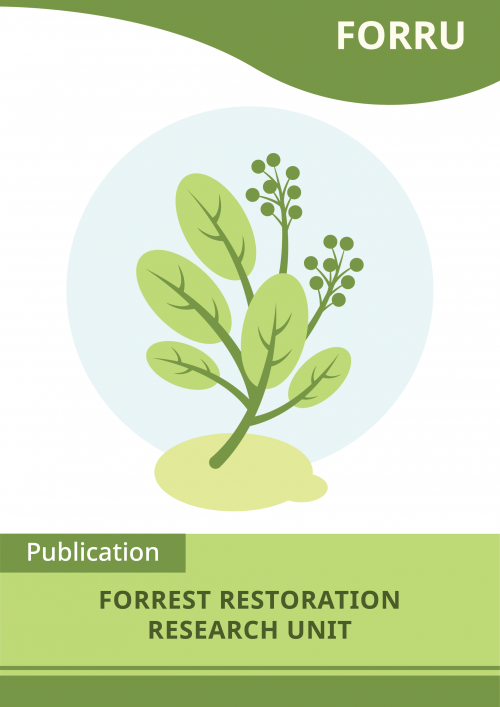Effects of Forest Fire Protection on Seed Dispersal, Seed Bank and Tree Seedling Establishment in a Dipterocarp-Oak Forest in Doi Suthep-Pui National Park

Monyrak, M., 1997. Effects of Forest Fire Protection on Seed Dispersal, Seed Bank and Tree Seedling Establishment in a Dipterocarp-Oak Forest in Doi Suthep-Pui National Park. MSc thesis, The Graduate School, Chiang Mai University
It was hypothesized that protecting deciduous dipterocarp-oak forests from fire would increase the seed rain, seed bank, and seedling establishment and alter the species composition of the seedling community to favour species characteristic of mixed deciduous-evergreen forest. A c. 2 ha. area in Doi Suthep-Pui National Park, protected forest from fire for 28 years, served as the experimental site and an adjacent area where forest fire occurs regularly was used as a control site.
Recruitment, survival, and growth of tree seedlings in the burned and protected areas were measured over 8 months from March 1996 to January 1997. Dead and newly emerged seedlings were recorded every 2 months in 20 permanent quadrats (2m x 2m) in each site. Likewise, 20 permanent seed traps (1m2) were set up and 40 soil samples (2 samples from each point) near each quadrat were collected to compare the seed rain between the burned and the protected sites. Traps were emptied every month in order to monitor fruiting phenology and dispersal patterns. Soil samples were screened by hand to find seeds buried in the soil and the litter. The viability of seeds was tested using hydrogen peroxide (H2O2).
Forest protection from fire significantly increased the seed rain and the seed bank (U=136, p<0.05, U=107.5, p<0.05 respectively). The seed rain of woody plants averaged 38.4 ± SD 25.69 m-2/ month of 21 species in the protected area, but only 23.25 ± SD 20.04 m-2/month of 12 species in the burned area. The average seed bank density was also significantly greater in the protected area (53.75 ±SD 7.975 m-2 of 11 species) than in the burned area (21.25 ±SD 2.405 m-2 of 9 species) (U Mann-Whitney, p<0.05). The density of tree seedlings was significantly higher in the protected area (3.88 ± SD 0.171 m-2 of 38 species) than in the burned area (2.81 ± SD 0.067 m-2 of 30 species) (t=11.63, p<0.001). Dipterocarpus obtusifolis Teijsm. ex Miq. var.obtusifolius, Shorea obtusa Wall. ex Bl., Quercus kerrii Craib var. kerrii, Lithocarpus elegans (BL.) Hatus. ex Soep., Craibiodendron stellatum (Pierre) W. W. Sm., Castanopsis diversifolia King ex Hk.f., and Tristaniopsis burmanica (Griff.)Wils & Wat. var. rufescens (Hance) Parn. & Lug., had significantly higher frequencies of occurrence in the protected area than in the burned area (Chi-square test using contingency table (2 x 2), p<0.05). The light-tolerant species such as Pterocarpus macrocarpus and Dillenia parviflora, were favoured by burning and Lithocarpus elegans, Castanopsis diversifolia, Craibiodendron stellatum, and Quercus kerrii var. kerrii characteristic of more advanced regeneration, were dominant in the protected forest. The mean mortality (4.99%) and recruitment rate (4.67%) of seedlings in the protected area was much higher compared to 2.17% and 1.49%, respectively, in the burned area. There were significantly greater species and individuals of seedlings in the protected area (t test, p<0.001). The protected area had 17.76% of seedlings up to 1m tall and 40.3% more than 1m, whilst the respective figures in the burned area were 10.45% and 8.11%. Both sites had mainly small seedlings < 50cm tall, 82.24% in the protected and 86.88% in the burned.
Seedling regeneration and species richness seem to be facilitated by protection from fire, whilst fire prevents seedling growth. The heterogeneity of the protected forest enhances germination and recruitment.

